Reading the Collections, Week 6: Insight into the 19th Century Mind
The St Andrews Literary and Philosophical Society was founded in 1838; it was no coincidence that Sir David Brewster was appointed Principal of the United College here in that year. A leading physicist and inventor, Brewster is recognised as a key figure in the popularisation of science in the mid 19th Century. The ‘Lit and Phil Soc’ movement provided an opportunity for broad engagement with the latest scientific developments by increasing numbers of people at a local level.
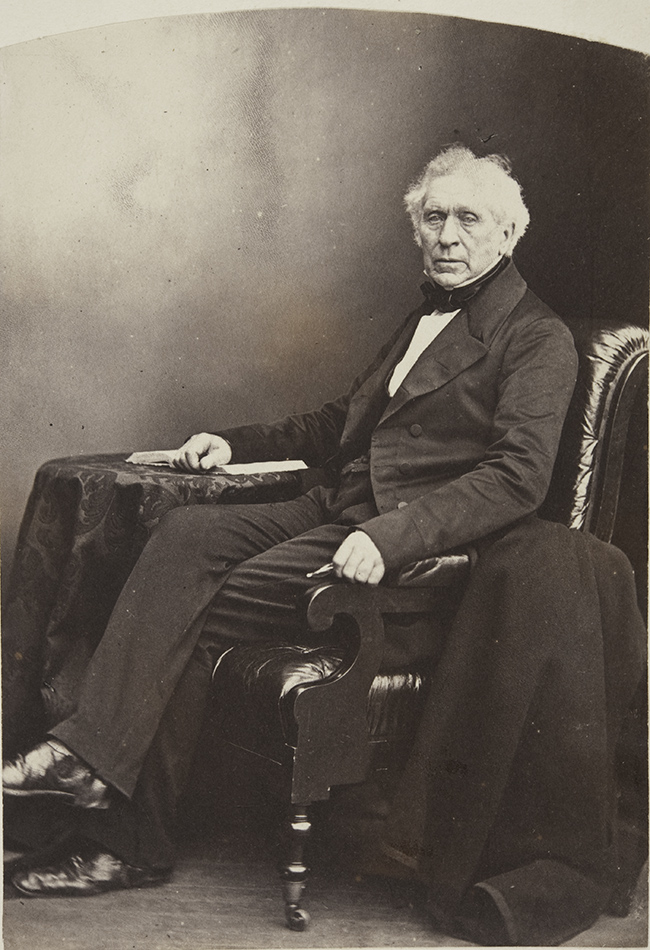
This ‘Reading the Collections’ post is selected from an archival, rather than a printed collection. I have been reading minutes – a surprisingly entertaining experience! The surviving records of our Lit and Phil Soc which existed from 1838-1904, are held in the muniment collection, and include minutes, accounts, lists and catalogues relating to the Society’s museum collections, as well as occasional correspondence and other papers. The museum objects gathered by the Society were the foundation of our University Museum Collections and some of the items listed can still be seen in the University today.
Reading a hand-written volume poses challenges not found in printed works. Fortunately the hand of the first secretary is largely legible, neat and regular and there are minimal erasures and corrections. Much of the record is carefully laid out with margins being used to summarise content. Sometimes lists are used and the minutes can include lists of names, entries bracketed together or linked.
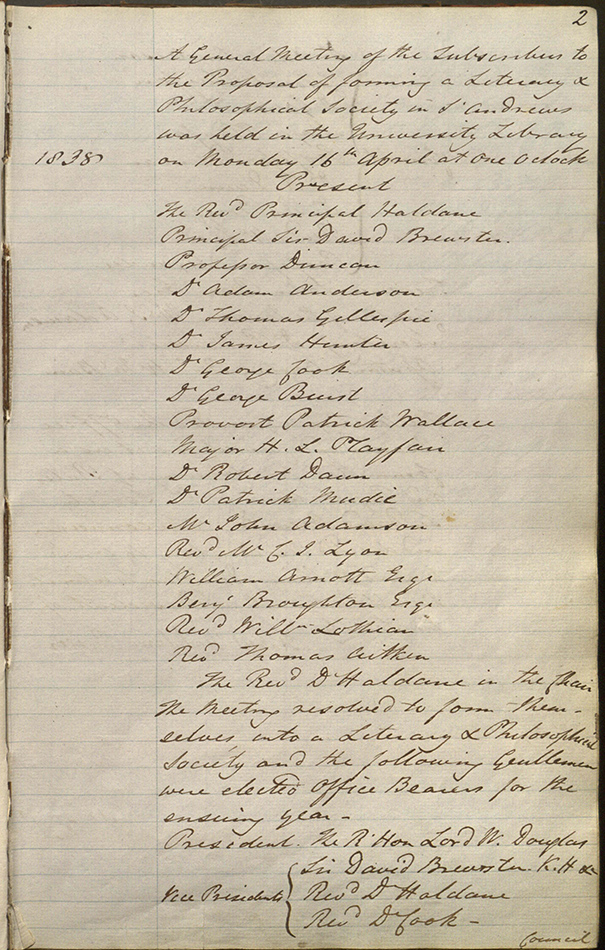
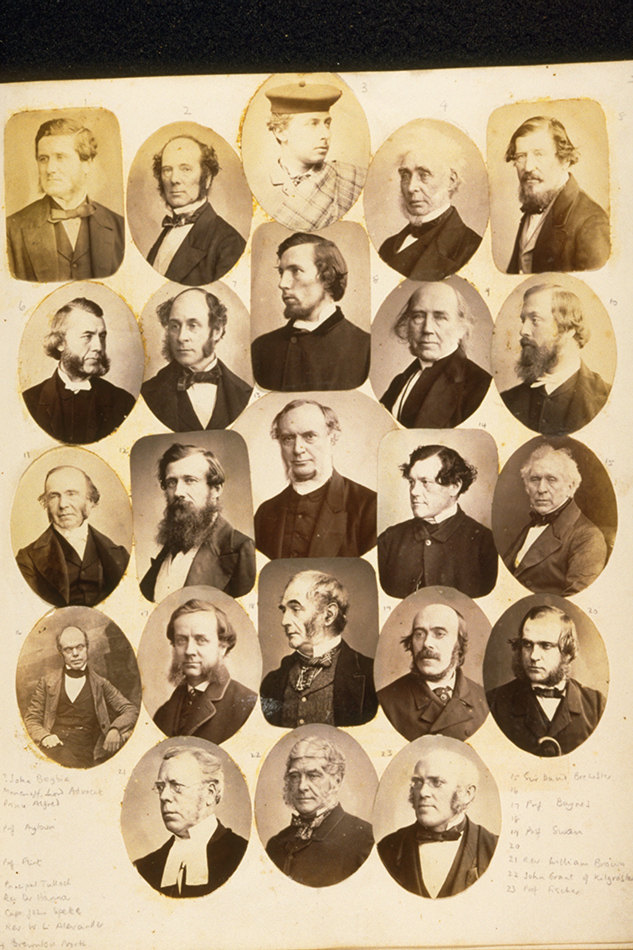
So how did it all begin? From the start it was a town and gown organisation. At a General Meeting of Subscribers to a Proposal to Form a Literary and Philosophical Society in April 1838 office bearers were appointed and Sir David Brewster convened a Committee to draw up rules and regulations for the New Society. Lit and Phil Socs were groups of like-minded individuals interested in education in literature, science and art for all. They usually offered lectures, acted as local museums gathering in collections and preserving and presenting them for their communities, and they often accumulated reference collections. Manchester (1781), Newcastle (1793), Liverpool (1812), Whitby (1823) and Leicester (1835) all had societies similar to St Andrews’.
The St Andrews Society quickly settled into a regular pattern of monthly meetings, at first held in the University Library then in its own museum or a University classroom. There were ‘ordinary’, or local members who attended, held office and participated directly, and ‘honorary’ and ‘foreign’ members who were usually less immediately engaged.
Ordinary members: the most respectable gentlemen of the city and neighbouring district. Honorary and foreign members: Gentlemen eminent for their scientific acquirements in every quarter of the globe.
From the start the Society collected objects, which are listed in the minutes, for a museum. They also noted publications by members and read correspondence and papers on a huge variety of topics.
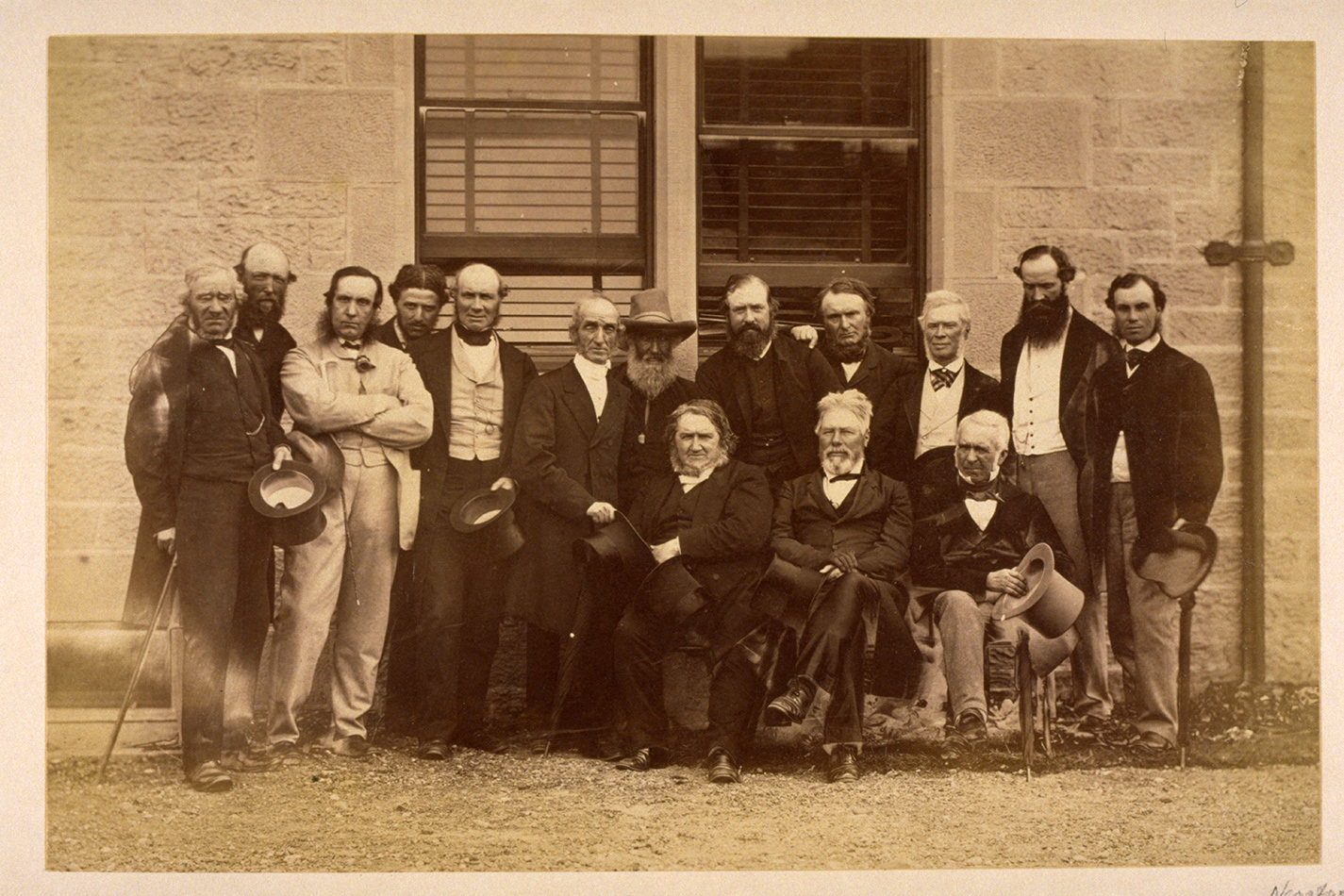
I have used the minutes of the first full year of the Society’s existence, up to the Annual General Meeting on St Andrew’s Day 1839, to pick out some of the characteristic features of this group of like-minded men who have left behind this fascinating record of their discoveries, discussions and thoughts.
AMBITIOUS – the Society wanted to be associated with the leading figures and office-bearers of their day. One page has ‘the Secretary to the Poor Law Commissioners of England’ listed next to ‘His Royal Highness The Rajah of Travancore’.
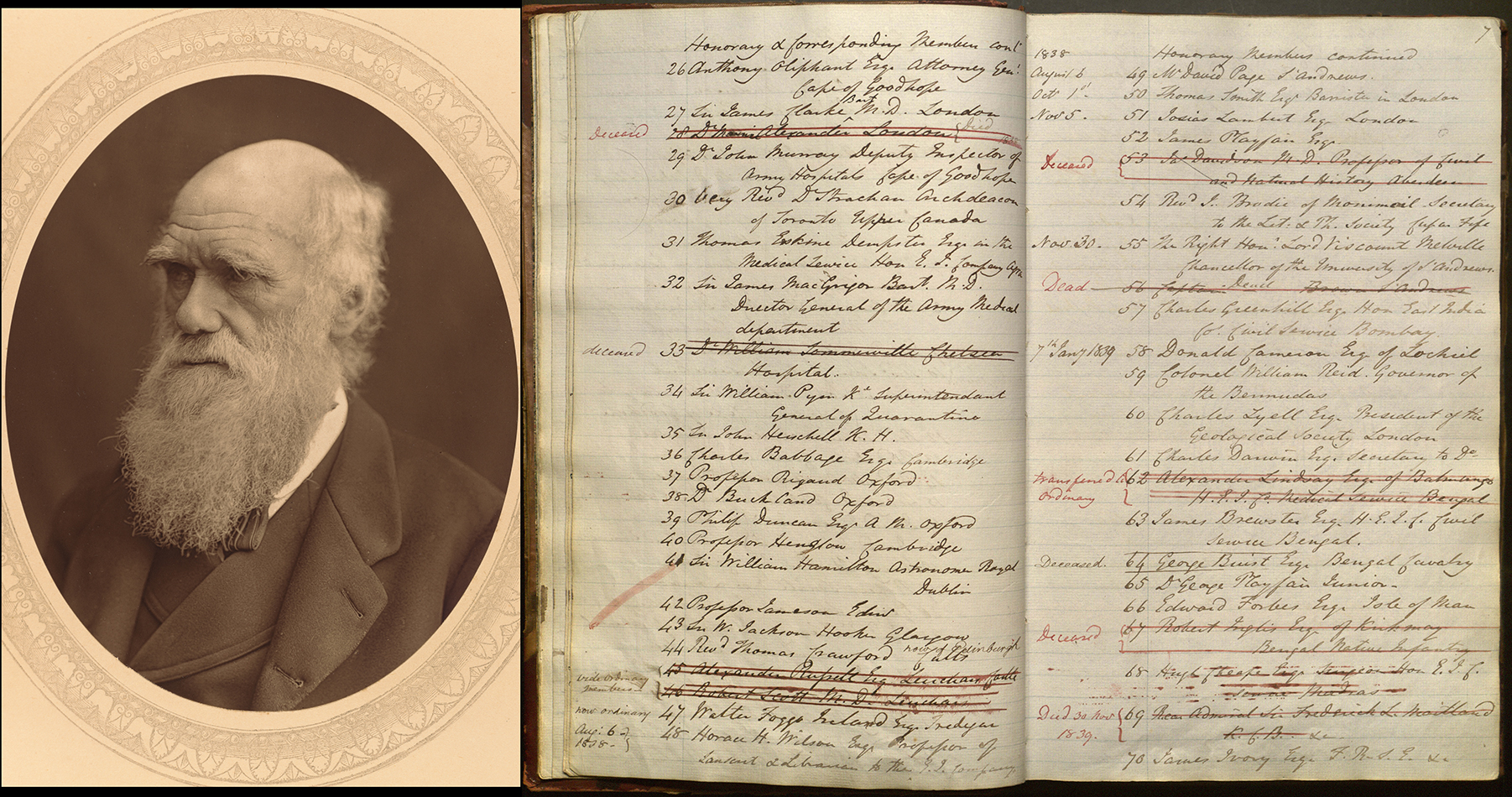
Right: Honorary members list in front of minute book, featuring 61 Charles Darwin esq., Secretary to the Geological Society of London, UYUY8525 p. 7r.
INTERNATIONAL – the foreign membership even in the early months extended to France, Italy, Russia, Scandinavia and India. Papers were read about travels, geography and geology of all parts of the world.
ACTIVE – donations to the museum were collected from anyone – locals to travellers and explorers. They collected everything: natural history and geological specimens, minerals, anatomical and ethnographic preparations, birds, coins, fossils, insects and archaeological artefacts.
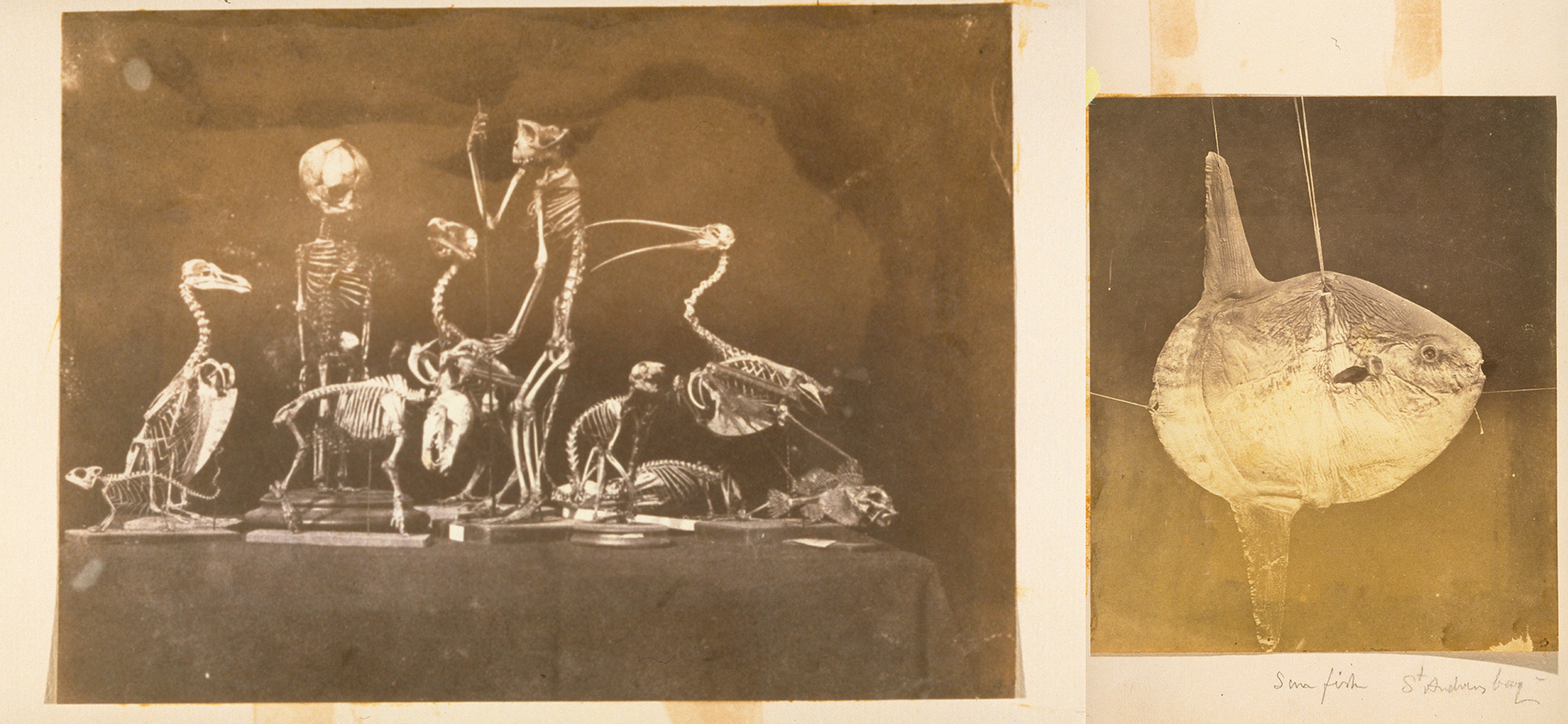
ENQUIRING – the latest scientific theories were explored at lectures.
PRACTICAL – demonstrations, diagrams, displays and experiments were used to illustrate the papers.
BROAD-RANGING – the hobbies of local gents were explored, everything from fossil-hunting and butterfly collecting to the history of the Culdees.
LOCALLY SIGNIFICANT – the Society raised awareness of the threat to local antiquities, and received reports on archaeological discoveries such as an ancient well discovered in the Greyfriars monastery site in Bell Street, St Andrews.
CURIOUS – the random and strange items discussed and donated reflect the miscellaneous nature of the ‘cabinet of curiosities’ so common at the time as well as the thirst for new knowledge at this time.
INNOVATIVE – reports were made of new species, fossil fish, a cure for dry rot and Brewster’s own experiments such as ‘subjecting Circular crystals to polarised light’.
PARTICIPATIVE AND PROVOCATIVE – there was active discussion and debate; disagreement was common and there were endless committees to be joined.
TOPICAL – the latest debates and theories were raised and debated – such as Charles Darwin’s letters discussing ancient coastlines found on land. The first documented reference to photography in St Andrews is recorded here on 4 March 1839 when Brewster showed drawings etc. executed by Mr Fox Talbot, by the Photogenic paper by the solar rays.
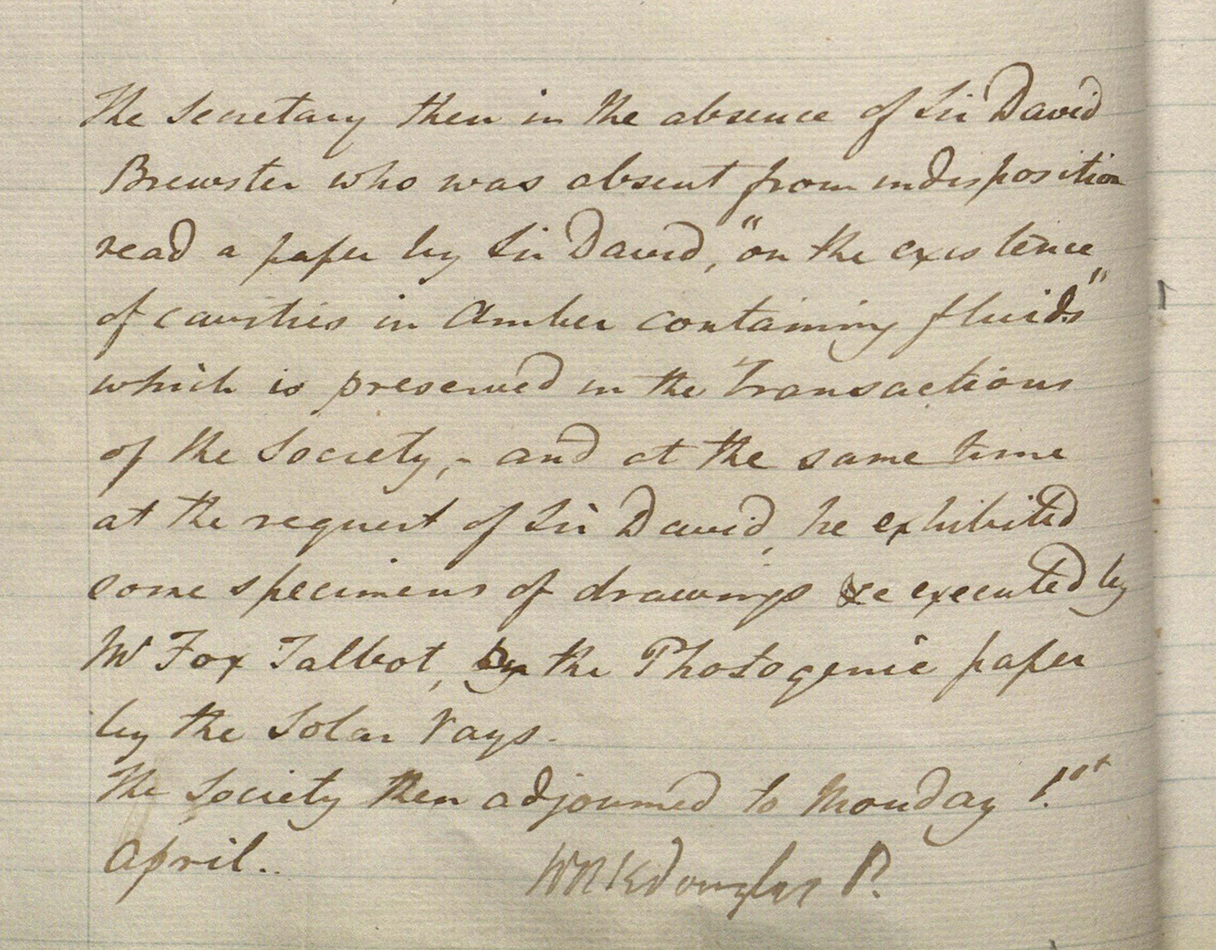
PROACTIVE – there was a proposal from Mr Buist for a perfect meteorological register for the whole county of Fife.
INFORMED – a reference collection was built up.
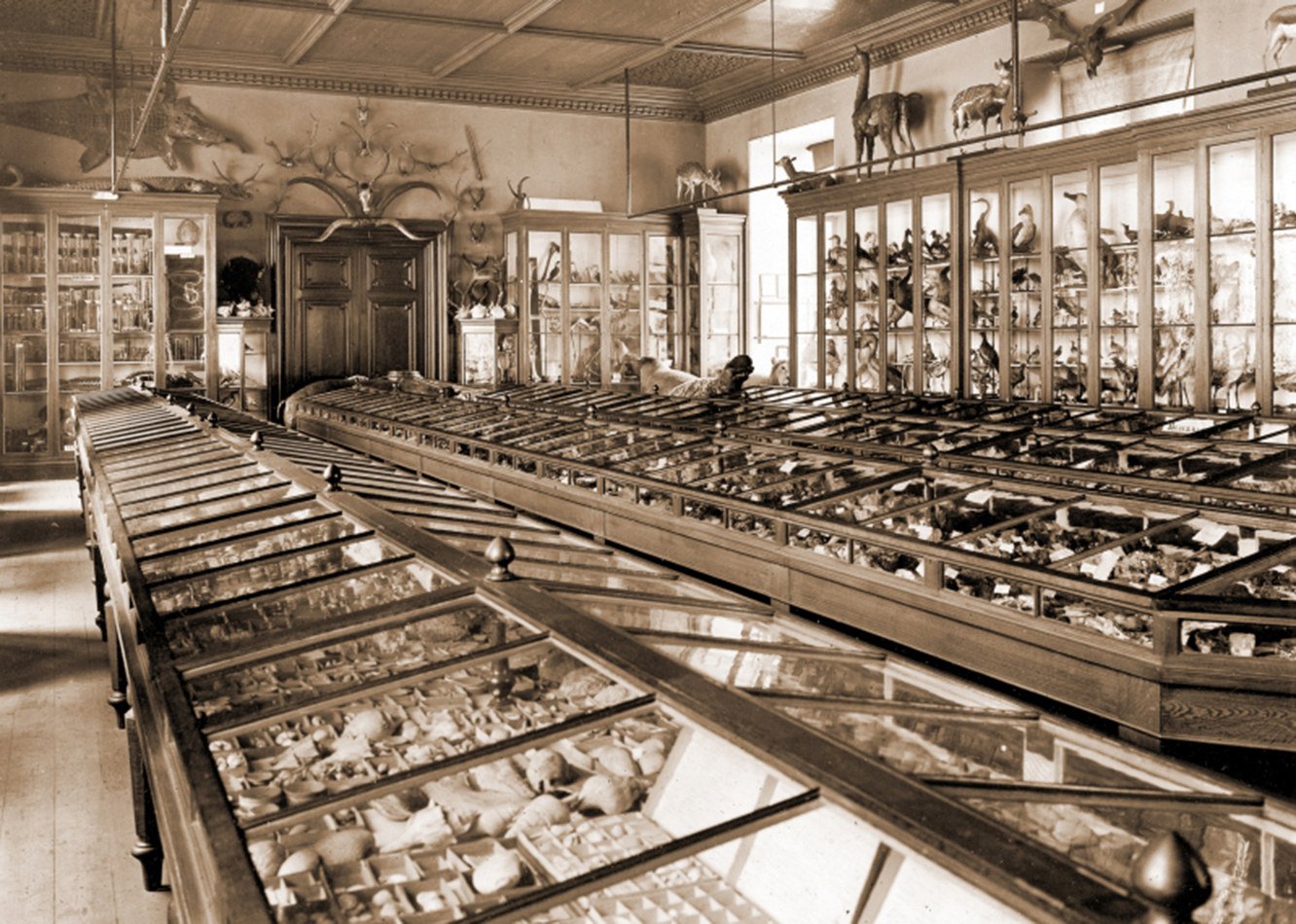
The legacy of the Lit and Phil Soc is found today in the University’s Museum Collections. ‘The curiosities which had been previously in the University Library’ were incorporated in 1838 and the University took over the museum, then in what is now Upper College Hall, in 1904. Some original items – the bark bowl and parts of an Egyptian mummy for example – are still in our collections. But wouldn’t it be amazing to be able to find some of the other items listed in the minutes: ‘a portion of the apple tree under which Sir Isaac Newton sat when he discovered the theory of gravitation’; ‘glass formed by the fusion of a haystack by lightning’ or ‘a piece of the lead coffin of Robert the Bruce’. I wish I had had time to read more and that the contributions read at meetings had survived!
-RH